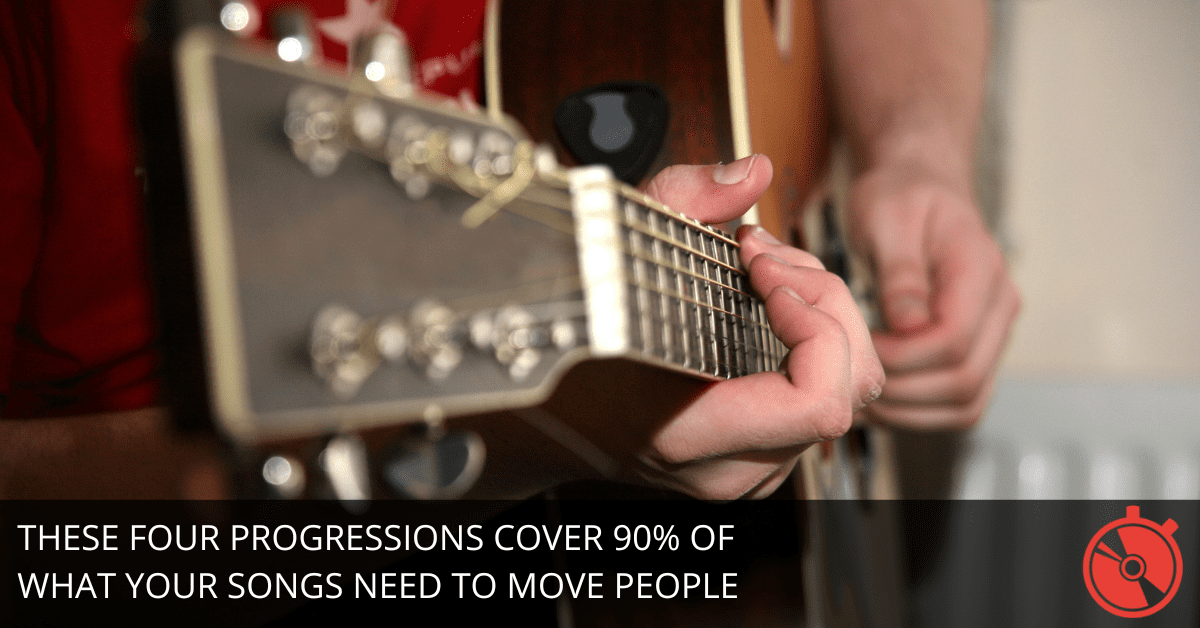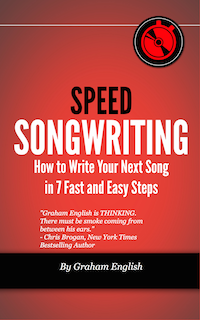
If your songs sound the same, your chord progressions are probably to blame.
And no, you don’t need to memorize a hundred jazzy changes to fix it.
You just need four.
Four progressions. Four moods. Four reliable ways to give your lyrics the emotional backbone they’ve been screaming for.
Each one is rooted in a specific musical mode. Each one tells a different kind of story.
Let’s break them down one by one.
1. The Ionian Progression (AKA: Major Mode with a Purpose)
This is your go-to when the song calls for warmth, confidence, or a little bit of nostalgia. Not fake cheer—real heart.
Chord progression:
I – V – vi – IV
(C – G – Am – F in C major)
Yeah, it’s the famous one. The “Don’t Stop Believin’” chord progression. The one that just works.
But here's why:
It moves like a conversation.
It starts from home (I), makes a bold claim (V), softens with a little vulnerability (vi), and lands somewhere human and grounded (IV).
Use it when your lyric says:
“I made it through.”
“She finally called.”
“We’re gonna be okay.”
To get started, follow these three simple steps:
- Pick a key. If you're writing something upbeat, C or G major are easy places to begin.
- Try singing your chorus title right on the I chord.
- Then, speak your next line aloud. Where your voice naturally lifts or falls, change chords.
Want it to feel more personal? Start on vi (Am) instead of I. It’s the same family of chords, just a different point of view.
2. The Mixolydian Progression (AKA: Confident, but Not Too Polished)
This one’s like a leather jacket and scuffed boots. Still major, still friendly, but with a little edge.
Chord progression:
I – bVII – IV
(G – F – C in G Mixolydian)
That bVII (F in this case) swaps the overly sunny major scale for something cooler—bluesier, funkier, more honest.
It’s the perfect choice when your lyric says:
“She’s out of my league, but I’m still trying.”
“This is the night everything changes.”
“We’re reckless, but it’s real.”
You’ll hear it in everything from Tom Petty to Lizzo. That tension between brightness and bite is gold.
Here’s what to do next:
- Take your major key—say, G.
- Flatten the 7th scale degree (F# becomes F).
- Build your chorus with G – F – C, and let that bVII land hard. It almost always does.
This progression begs for syncopation. So match it with a rhythm that pushes forward: 8th note hits, claps on 2 and 4, or a stuttering vocal phrase that cuts through the grid.
3. The Dorian Progression (AKA: Hope in the Dark)
Dorian is minor. But not tragic.
It’s the sound of someone walking away from heartbreak, not curled up in it. There’s sadness, sure, but with grit underneath.
Chord progression:
i – IV – v – i
(Am – D – Em – Am in A Dorian)
That major IV chord (D in this case) is the twist. It gives the minor mood a little lift—a flicker of optimism.
Great for lyrics like:
“She left, but I’m still standing.”
“I’m not okay—but I will be.”
“We tried. It meant something.”
You’ll hear this in songs like "Mad World" by Tears for Fears or "Scarborough Fair" if you're feeling folky.
To write in Dorian:
- Start with a minor chord that doesn’t feel too heavy. A minor or D minor is perfect.
- Add the IV chord to brighten it (D in A Dorian, G in D Dorian).
- Keep the melody on the modal note—a raised 6th (F# in A Dorian)—to drive it home.
It’s subtle, but that one note changes everything.
4. The Aeolian Progression (AKA: Minor and Mean It)
This is full-on sad mode.
It’s where you go when your lyric is in pieces—when you’re not just describing loss, you are the loss.
Chord progression:
i – VI – III – VII
(Am – F – C – G in A minor)
Yes, it’s the minor mirror of the Ionian progression. Same shapes. Totally different energy.
Use it when your lyric says:
“She’s not coming back.”
“I broke it. I know that now.”
“This is the end.”
It works because it feels inevitable. The chords fall like dominos.
Here’s how to use it without sounding whiny:
- Keep your melody tight. Stay close to the root note or the third of each chord.
- Let your rhythm breathe. Slow tempo, fewer syllables, and longer vowel holds.
- Save your emotional explosion for the VII chord. That’s where the ache swells.
This is also the progression behind a ton of pop ballads and cinematic music. When paired with imagery (a half-empty coffee cup, a voicemail that’s still saved), it hits even harder.
Wrap-Up: Match Tone to Progression
Here’s your cheat sheet:
| Mood | Mode | Progression |
|---|---|---|
| Warm, hopeful | Ionian | I – V – vi – IV |
| Confident, raw | Mixolydian | I – bVII – IV |
| Resilient sadness | Dorian | i – IV – v – i |
| Full heartbreak | Aeolian | i – VI – III – VII |
Each one is a musical mood engine.
So next time you’re stuck writing a chorus, don’t guess. Look at your lyric. Ask yourself what it feels like. Then, pick the progression that matches the tone, not just the key.
It’s faster, more fun, and way more effective than winging it.
Because once the harmony fits, the hook practically writes itself.

Enter your first name and email address below and click “GET ACCESS NOW!” to get the Speed Songwriting Cheat Sheet delivered to your inbox!
We guarantee 100% privacy. Your information will not be shared.

Useful info-Thanks!
Glad it helped! Let me know if you try any of the progressions in your next song.